Tubeless vs tube — that is a dilemma that every mountain biker must decide. Unless you’re new to the sport, you’re aware of tubeless tires.
But perhaps you’re still not sure if you should make the leap and part with those balloons inside the tires.
These pros and cons of tube vs tubeless bike tires are 12 key ways to help you decide.
Tubeless Pros:
1. Fewer Flats!
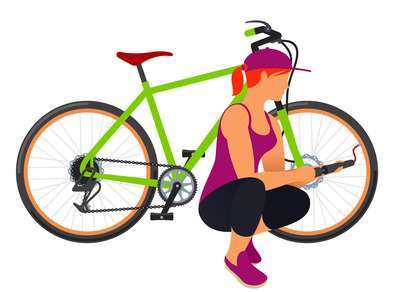
Small punctures fix themselves
Fixing flats in the trail will let the air out of any ride. Many of these you won’t even notice because the sealant does its job and fills the hole.
No pinch flats
Also known as a snake bite, this type of flat results from a high impact hit where you get two holes in the inner tube. No inner tube = no pinch flats.
A large hole is a problem with or without tubeless
An internal patch might do the job or a plug kit, which you can now get at bike shops. Duct tape might also work, as a temporary fix.
More time riding; less money spent on tubes.
2. Superior Ride Quality

Tubeless tires mean you can lower tire pressure significantly.
This results in three main benefits:
3. Lower weight
Inner tubes have weight, adding about 200 grams. No inner tube = less weight. When you factor in tubeless tire weight additions, you could save about half a pound.
Saving weight around the wheels is more important than elsewhere.
Why? Not only does it add weight to the bike, but it also adds rotational weight, which affects you every time you accelerate.
4. Tubeless Ready Tires
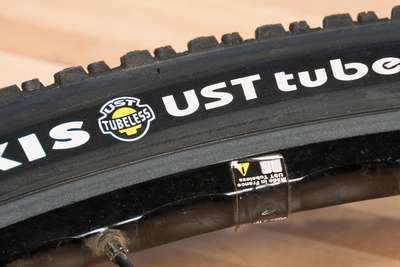
Via parktool.com
Look for “Tubeless Ready,” “Tubeless Compatible,” or UST tires and rims.
The best tires today come tubeless-ready.
If tires aren’t tubeless-ready, it’s better not to use them for a tubeless setup.
The bead, the part of the tire that touches the rim, on such tires is less firm and the tire sidewalls are thinner.
Affordable tubeless wheels. Example: Mavic XA Trail wheelset costs $350.
5. Tubeless Conversion Kit - Simple to Install
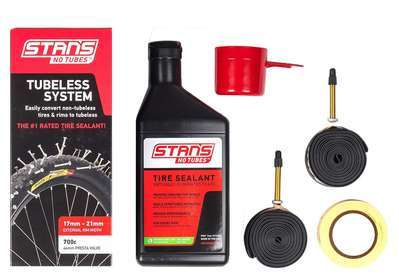
Via bike24.com
Tubeless Cons:
1. The Expense

2. Tubeless Tires Can Burp
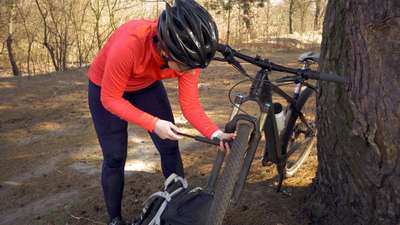
The latter is unusual. The former occurred to a tandem riding in front of me during a race once.
Their back wheel hit a rock. Sealant splashed in the air, including into my mouth.
So, there’s another con: sealant flavoring is bad.
Result: sudden loss of some air.
Easy solution: add air from mini-pump or C02. If you carry no air source, then apparently air leaked into your head.
3. Still, Need to Carry a Tube
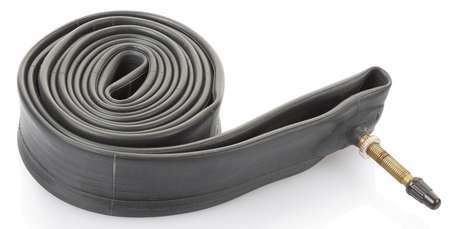
If sealant won’t fill a hole, you still need to have a spare tube as a backup.
4. The mess of On-Trail Problems

If you do need to remove a tire on the trail, the sealant is messy. Later, removing that inner tube you installed is even messier.
Also, remounting some tubeless tires on the trail will not be a walk in the park. But it could result in a walk through a park.
5. Some Sealants Not Compatible with CO2
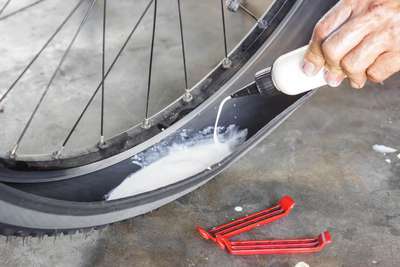
Most riders use CO2 containers for air while on the trail. The most commonly used sealant, Stan’s, for example, can congeal if used with CO2.
This creates balls or boogers bouncing around inside the tire. It also means those boogers no longer act as a puncture-filling sealant.
6. Not the Easiest Set-Up
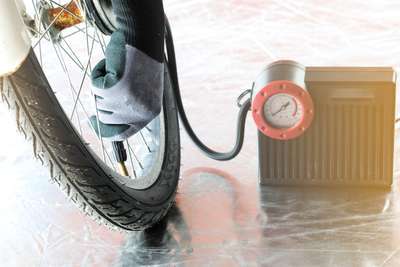
Tubeless tires tend to be harder to mount
Soapy solution
This goes on the tire bead to make bead snap into place correctly.
Worst of all:
A regular floor pump will not work to fill up the tire as you need a sudden big hit of air to properly inflate.
You must either:
Hire someone?
If it made you tired just reading through these steps, you can always pay your local bike shop to do the job for you.
But for Heaven’s sake, bring the mechanic a six-pack as a thank you.
7. Need to Replace Sealant Every Few Months
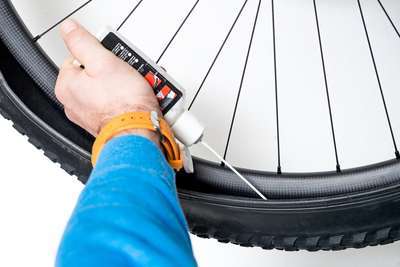
If you add sealant regularly, you should be good. A sealant can dry up faster, though, and you might not know.
Do you really have to repeat the above mounting steps every few months when you re-add sealant?
Fortunately, no. The bead will stay put, other than where you open it.
It’s even easier if you get a removable valve core and inject the sealant into the tire with a special syringe, without separating the tire bead from the rim at all.
This means a regular floor pump will work to reinflate.
Should I Go Tubeless on My Mountain Bike?
If you’re a very casual and occasional mountain biker, tubeless is probably not worth the hassle of the set-up nor the cost, and the benefits probably aren’t important enough to you either.
If you’re a consistent weekend warrior or a more serious mountain biker, you should probably be running tubeless tires.
Like anything else, some are actively opposed. It’s not a must like wearing a helmet. I once rode with a friend who was pro-tube, and on the ride, I had two separate punctures that didn’t seal themselves.
Laughing, he said, “I bet you’ll get rid of that tubeless garbage now!” I didn’t. Because that experience is rare.

The Bottom Line:
Since Mavic brought out tubeless tires and rims for bikes in 1999, mountain bikers have wondered about tubeless vs tube.
Although there is probably a technology of the near future that will simplify these tires, the benefits of mtb tubeless today still outweigh the costs.
Your turn - what do you think their difference? Tell me below.

I was planning to update tube tires and rims to tubeless but as I am on long bike tours for most of the time and I only have a small regular floor pump so it looks like it will not be a good decision. This was a detailed written article that taught me a lot about tubeless tires. Thank you.